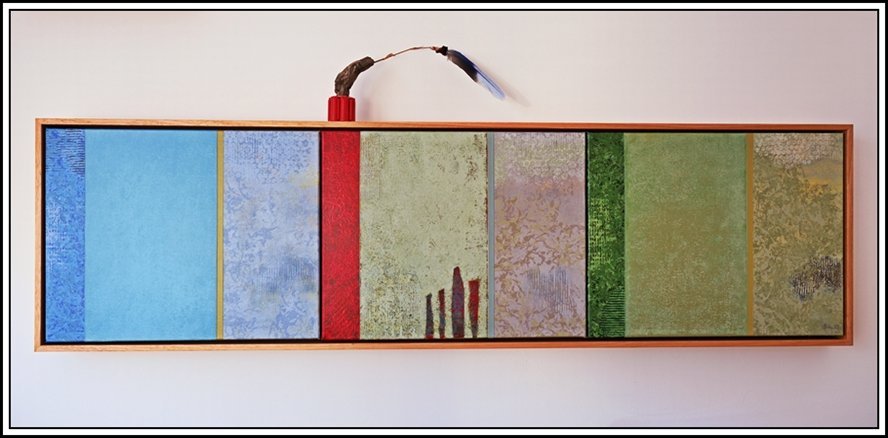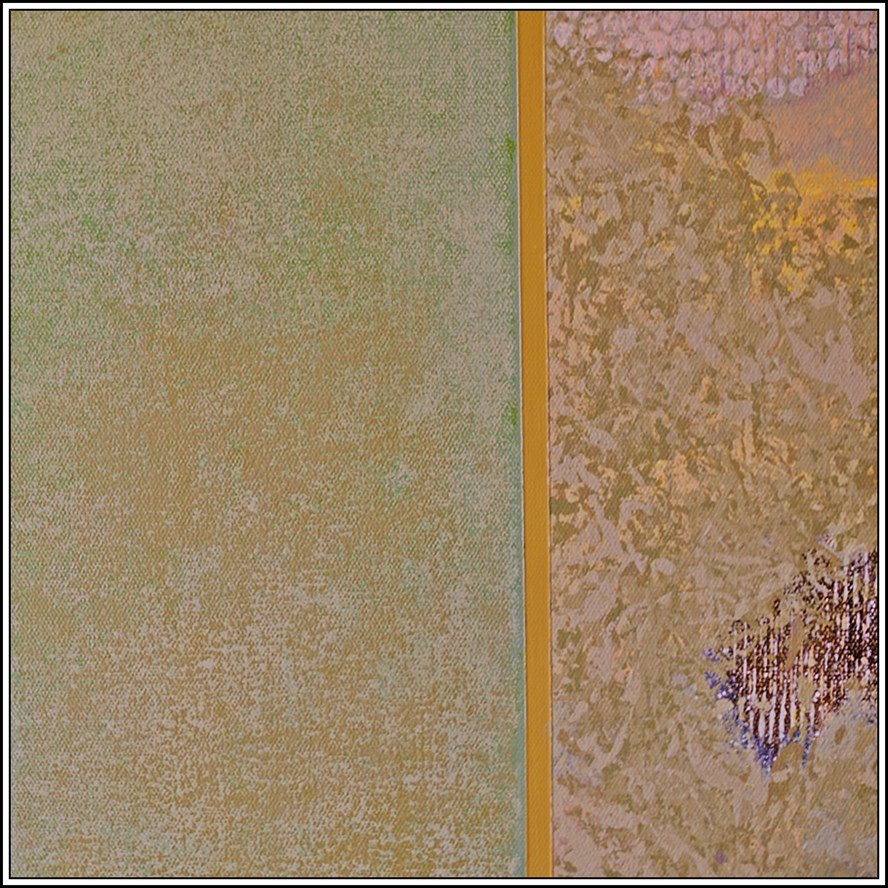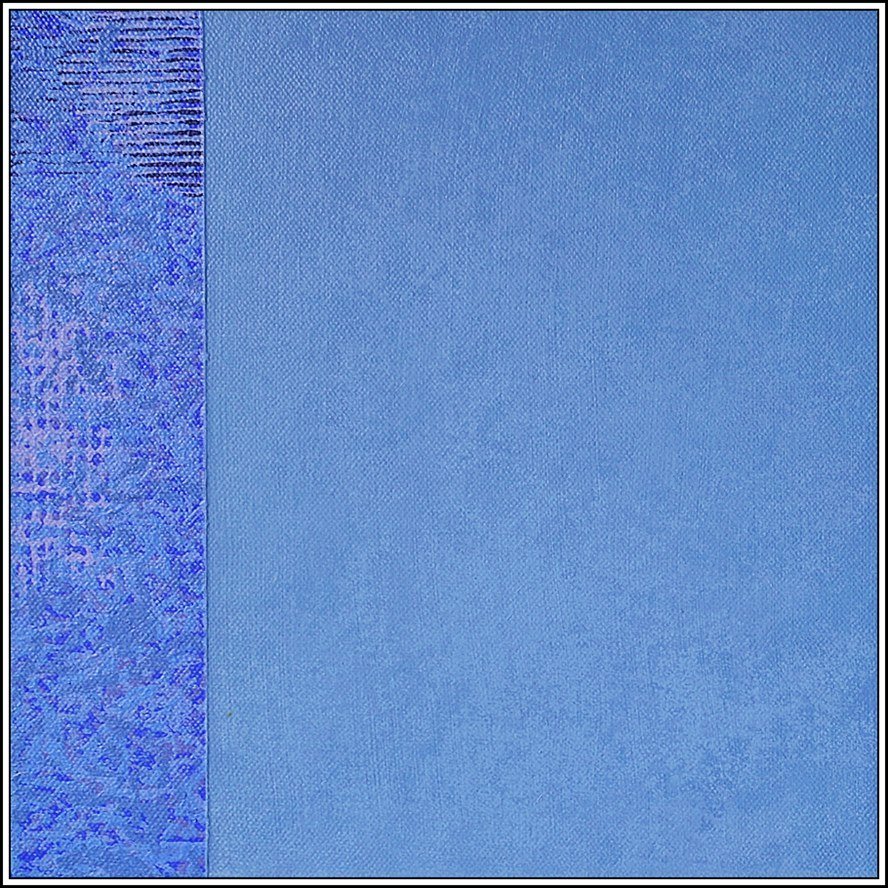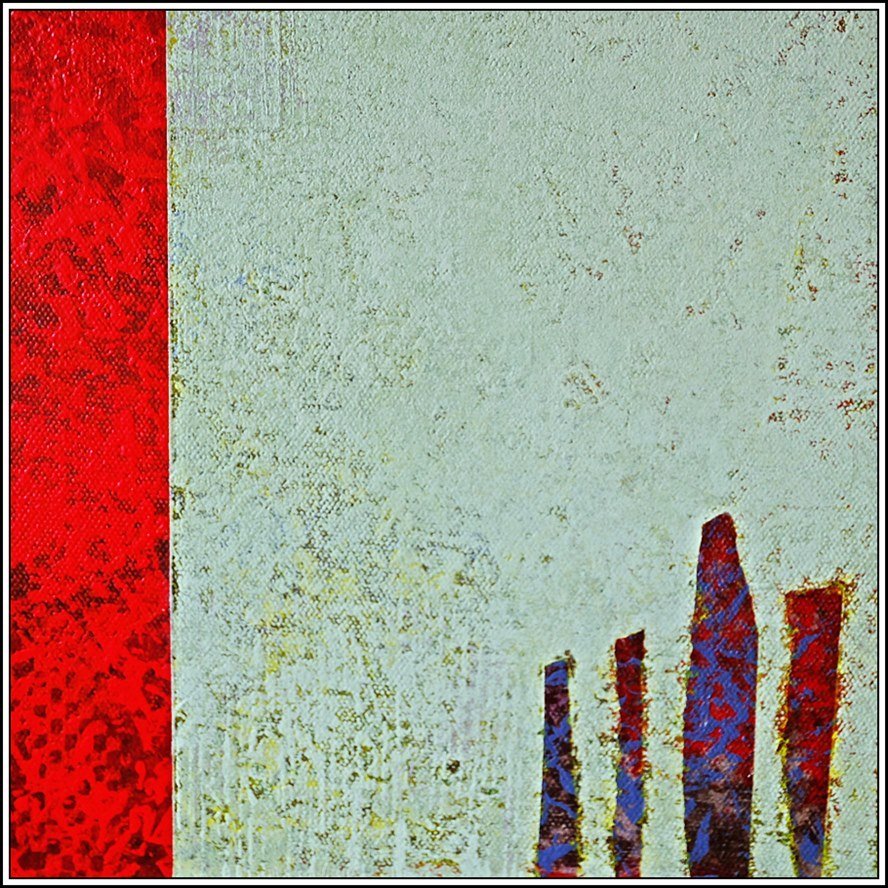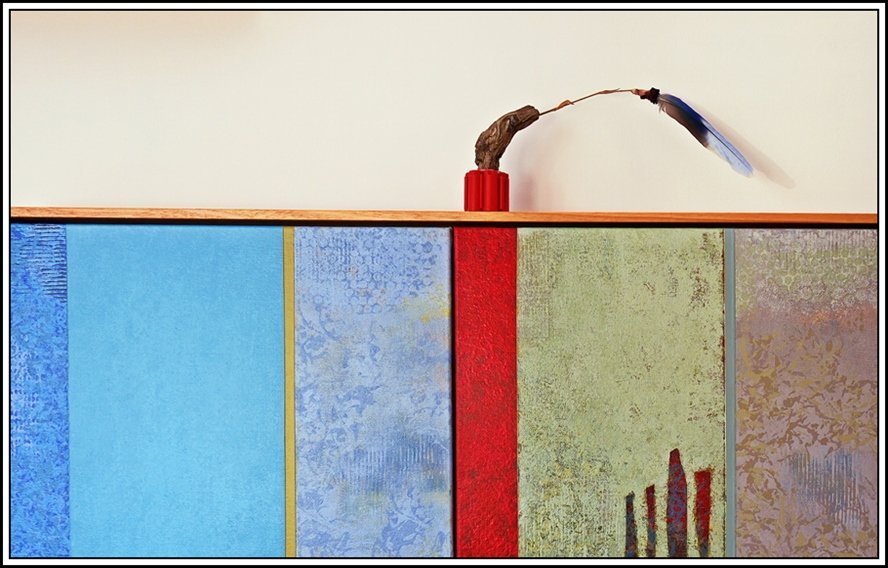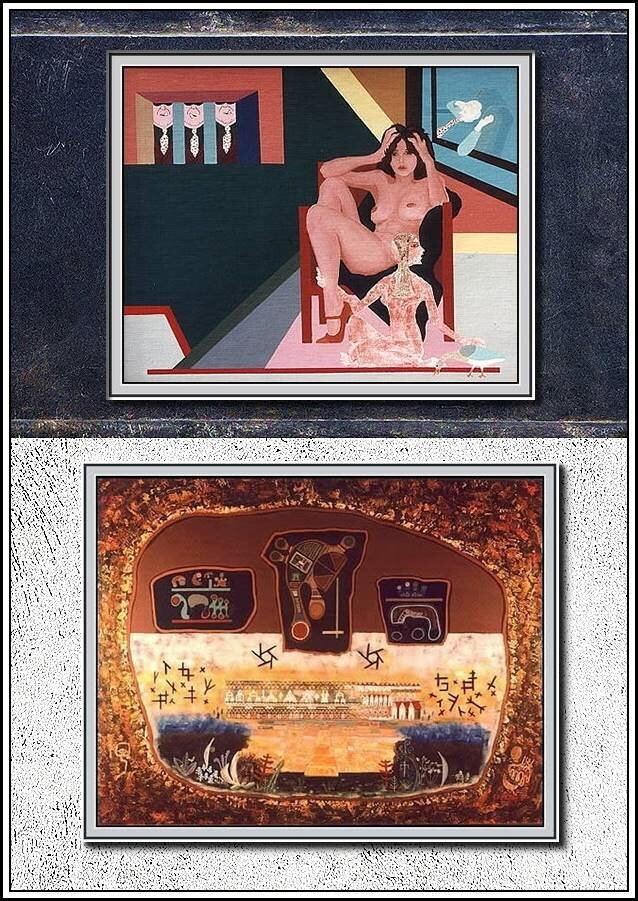With the help of music by Swiss pianist, composer, bandleader, record producer and author Nik Bärtsch, this triptych is the first of a series simply titled: “It Just Is #1”.
It’s an ongoing theme that currently has my full attention in the sandpit/studio. Having said that, this piece will be the only one depicted as a triptych. Below work being the first, the second completed artwork will be titled… “It #2”, then followed by “It #3”, and so on. All will be in tandem with Bärtsch’s music.
The triptych artwork below was professionally framed in Tasmanian pine by Wagner Framemakers, size, 30cm x 110cm, medium used: synthetic polymer and a surprise additional movable mixed media piece consisting of a weathered piece of wood, dried flower, rainbow lorikeet feather and a red object found buried in our current garden.
@shanegarton_artworks - https://www.instagram.com/shanegarton_artworks/
“It Just Is #1” - Triptych
Below are three completed sections of a triptych. The other three quarter section of the paintings maybe completed using oil paint via impasto technique.
DETAIL of “It Just Is #1”. - Triptych - (right side end canvas)
DETAIL of “It Just Is #1”. - Triptych - (left side end canvas)
DETAIL of “It Just Is #1”. - Triptych - (center canvas)
DETAIL of “It Just Is #1”. - Triptych
